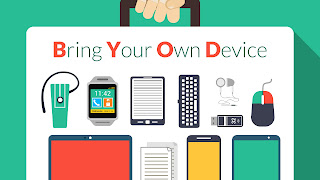Twitter Feed
Is Cloud Computing applicable in national security and law enforcement?
Late last week I asked the following question on linkedIn “Are Cloud Computing concepts applicable in secure national security and law enforcement arenas (i.e. Defense, Homeland Security, Intelligence, Justice)? If…
The size of Google’s Cloud
From The Information Factories by George Gilder of Wired Magazine “The facility in The Dalles is only the latest and most advanced of about two dozen Google data centers, which…
Yahoo (Finally!) Jumps Big Into Cloud Computing
According to The Register , the Yahoo! technology organization led by CTO Ari Balogh will now work on “developing a world-class cloud computing and storage infrastructure; rewiring Yahoo! onto common…
InformationWeek Cloud Computing Newsletter
InformationWeek has started a Cloud Computing Newsletter. They will be providing news and insights on this “critical IT trend”. Cloud computing ranges from the software-as-a-service market to Web-based storage services…
Is Cloud Computing just a fad?
Last week I attended an IBM SOA event in Northern Virginia. While there, I was discussiing the merits of cloud computing with some interested attendees. Their key question was if…
Joint Warfighting Conference 08
Last week I attended the Joint Warfighting Conference 08 (JWC 08) in Virginia Beach, Va. There were approximately 5000 attendees representing military, industry, academia, and government, registered for this year’s…
IBM Opens Africa’s First “Cloud Computing” Center
…… Second Cloud Center in China “IBM (NYSE: IBM) today announced the opening of new “cloud computing” centers in South Africa and China. Cloud computing enables the delivery of personal…
Dataline launches SOA-R: Cloud Computing for National Security Applications
Last week, Dataline (my company), in collaboration with IBM, Google, Northrop Grumman, Cisco and Great-Circle Technologies, launched an initiative aimed at integrating an end-to-end solution for secure cloud computing. Called…
Cloud Computing Value
In The real value of Cloud Computing, ENKI hits on why cloud computing is disruptive. It’s the services stupid !! By separating enterprises from their servers and offering universal, secured,…
How Cloud Computing Works
Jonathan Strickland provides an excellent overview of cloud computing on the how stuff works website. Follow me at https://Twitter.com/Kevin_Jackson
- Increased employee mobility (63%), satisfaction (56%) and productivity (55%) dominate as the top drivers of BYOD. These employee related drivers are considered more important than reduced costs (47%).
- Security (39%) and employee privacy (12%) are the biggest inhibitors of BYOD adoption.
- 20% of surveyed organizations have suffered a mobile security breach, primarily driven by malware and malicious WiFi.
- Security threats to BYOD impose heavy burdens on organizations’ IT resources (35%) and help desk workloads (27%).
- Despite increasing mobile security threats, data breaches and new regulations, only 30% of organizations are increasing security budgets for BYOD in the next 12 months and 37% have no plans to change their security budgets.
- 72% – Data leakage/loss
- 56% – Unauthorized access to company data and systems
- 54% – Downloading of unsafe apps or content
- 52% – Malware
- 50% – Lost or stolen devices
- 49% – Vulnerability exploitation
- 48% – Lack of control on endpoint security
- 39% – Infrequent software updates
- 38% – Compliance
1. Create your policy before procuring technology: To effectively use mobile device management (MDM) technology for employee owned devices Policy must precede technology. Also note that these policies will have broad corporate-wide implications for IT, HR, legal, and security.
- Mobile device management
- Application security assessments
- Application testing services
- Application source code security assessments; and
- Embedded device security.
This post was brought to you by IBM Global Technology Services. For more content like this, visit ITBizAdvisor.com.
( Thank you. If you enjoyed this article, get free updates by email or RSS – © Copyright Kevin L. Jackson 2017)
Cloud Computing
- CPUcoin Expands CPU/GPU Power Sharing with Cudo Ventures Enterprise Network Partnership
- CPUcoin Expands CPU/GPU Power Sharing with Cudo Ventures Enterprise Network Partnership
- Route1 Announces Q2 2019 Financial Results
- CPUcoin Expands CPU/GPU Power Sharing with Cudo Ventures Enterprise Network Partnership
- ChannelAdvisor to Present at the D.A. Davidson 18th Annual Technology Conference
Cybersecurity
- Route1 Announces Q2 2019 Financial Results
- FIRST US BANCSHARES, INC. DECLARES CASH DIVIDEND
- Business Continuity Management Planning Solution Market is Expected to Grow ~ US$ 1.6 Bn by the end of 2029 - PMR
- Atos delivers Quantum-Learning-as-a-Service to Xofia to enable artificial intelligence solutions
- New Ares IoT Botnet discovered on Android OS based Set-Top Boxes


